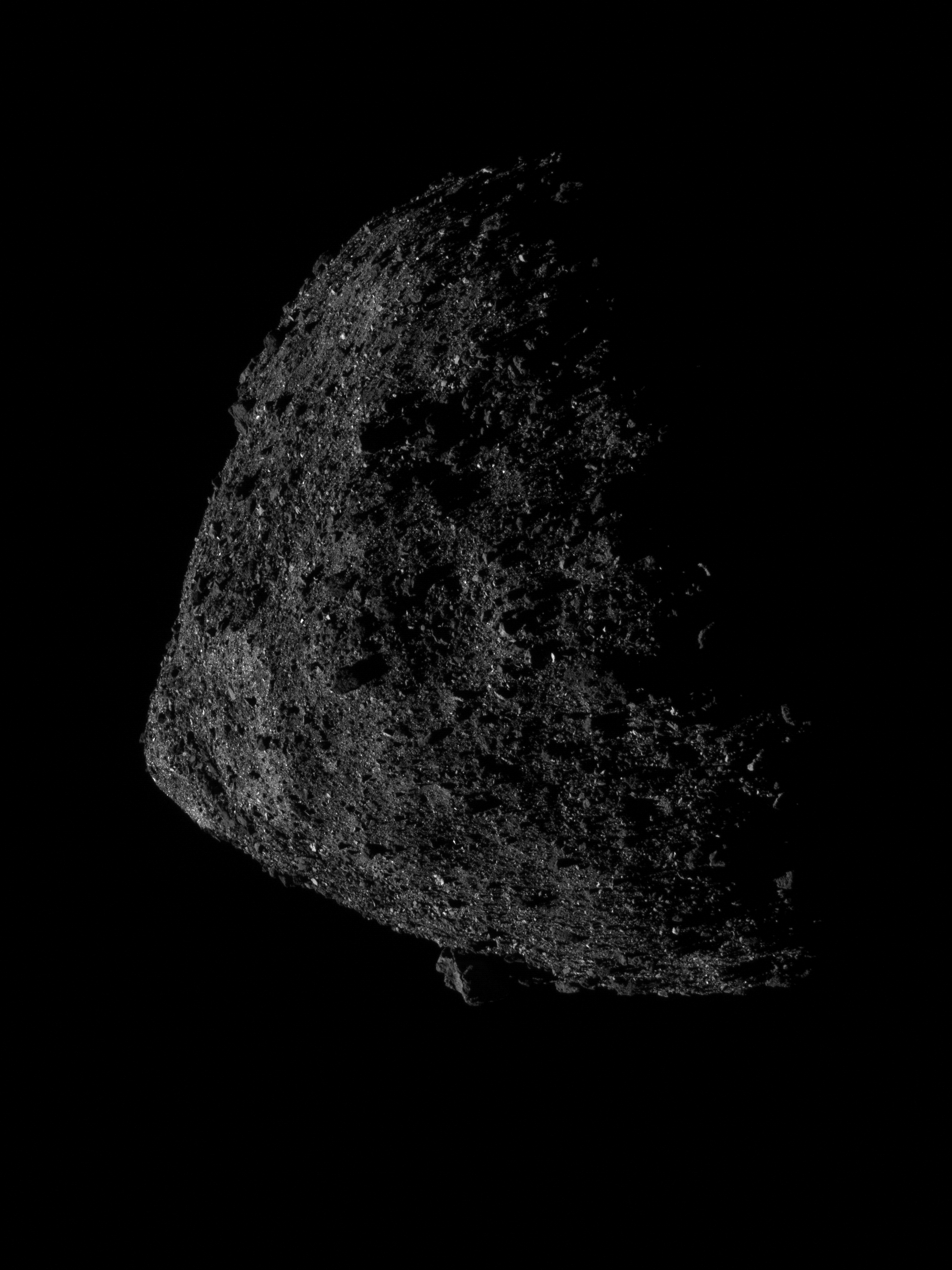- This topic has 5 replies, 4 voices, and was last updated 6 years, 4 months ago by
 Richard Miles.
Richard Miles.
-
AuthorPosts
-
19 June 2019 at 6:57 am #574350
 David SwanParticipant
David SwanParticipantQuite remarkable image.
Date Taken: June 13, 2019
Instrument Used: TAGCAMS (NavCam 1)
Credit: NASA/Goddard/University of Arizona/Lockheed Martin
Attachments:
19 June 2019 at 4:05 pm #581167 Richard MilesParticipant
Richard MilesParticipantThe material looks to be very coarse and rather angular in shape.
Not much evidence of fine dust.
My take on this, David, is that the assemblage formed by gravitational attraction from debris whilst at relatively high, refractory temperatures – quite unlike a comet precursor. I wonder how rich it is in carbon and is any of it in nearly pure elemental form?
11 August 2019 at 1:09 pm #581247 Stewart John BeanParticipant
Stewart John BeanParticipantHaving looked at the front page of the August journal , I am also struck by how coarse the material seems to be. Could the absence of fine dust be linked to the accumulation of charge on particles under the influence of the solar wind or deep UV? Electrostatic repulsion between individual particles and Bennu itself will be larger than the gravitational force for all but the larger particles assuming they both charge with the same polarity. So only big pieces can grow into something like Bennu.
In the outer solar system far from the solar wind charging will be much less significant and smaller particles can clump into a comet precursor.
Stewart
14 August 2019 at 11:02 am #581260 Dr Paul LeylandParticipant
Dr Paul LeylandParticipant” but more especially the bulk density of Bennu is only 1.26+/-0.07 g/cc. So as there are a lot of voids between the boulders, their density will be close to 1.0 g/cc on average.”
I’m confused. You appear to say that the bulk density (1.26) is greater than the boulder density (average 1.0). How can this be? Is the latter figure a typo for 2.0, say?
31 August 2019 at 9:41 am #581330 Richard MilesParticipant
Richard MilesParticipantApologies – you are correct – the density of individual pebbles should be about equal to the Bulk Density divided by the Packing Density. So if the Packing density is 0.7 then the actual density of the pebbles would be 1.26/0.7 = 1.80.
Not good to rush from one thing to another on my part. And one should read what one has written before posting! Sorry for that – I will edit the above and put it right.
In fact, my earlier post talked about the angular nature of the pebbles/boulders and the lack of dust particles, and I speculated that one reason is that this could be that the material formed in a relatively high-temperature environment and that it could be rich in carbon including elemental carbon. So having a true density of 1.8 (not 1.0) and being very dark would fit with that scenario.
31 August 2019 at 9:45 am #581257 Richard MilesParticipant
Richard MilesParticipantGood point Stuart.
Since Bennu is located between 0.9 AU and 1.4 AU from the Sun, it is in a relatively harsh environment exposed to the solar wind and measuring only about 500m across it has an extremely low gravity. So since it is likely to be billions of years old, there is a lot of time for any dust between the loose assemblage of boulders to be lost. As to the mechanism for this, electrostatic charging is a good one, as you suggest.
One thing to note when looking at the boulders is that they are not like terrestrial rocks since they are very black (4.6% albedo) but more especially the bulk density of Bennu is only 1.26+/-0.07 g/cc. So as there are a lot of voids between the boulders, their density will be roughly 1.8 g/cc on average. This value is similar to the lightest meteorites (certain carbonaceous chondrites have a density of about 2.1 g/cc). My guess is that many of the boulders comprise some sort of porous carbon material mixed with silicaceous grains.
Next year, a sample is scheduled to be taken and the scientists are looking for areas on its exterior where fine-grain material is present and where they can avoid boulders. They have found 4 possibilities:
https://www.space.com/asteroid-bennu-landing-site-options-nasa-osiris-rex.html
-
AuthorPosts
- You must be logged in to reply to this topic.

